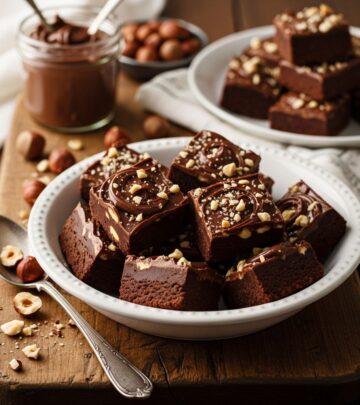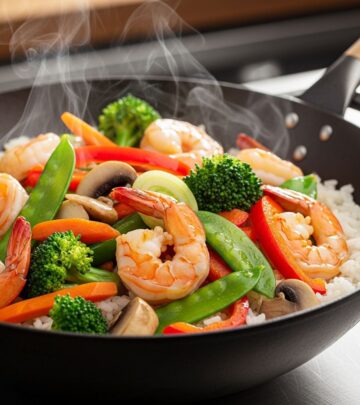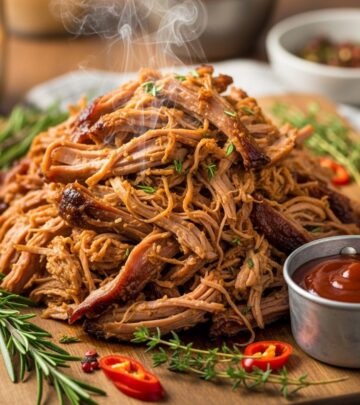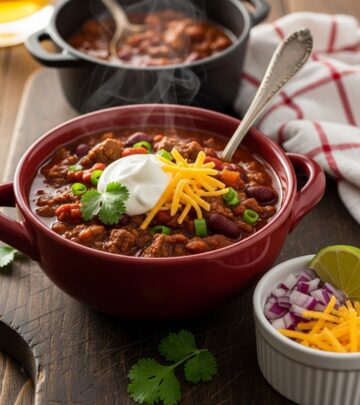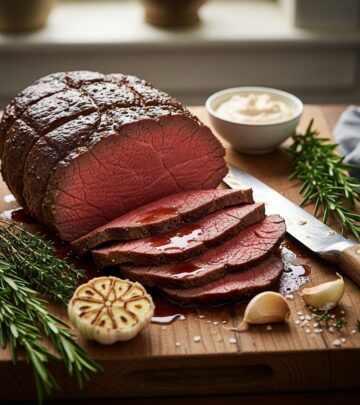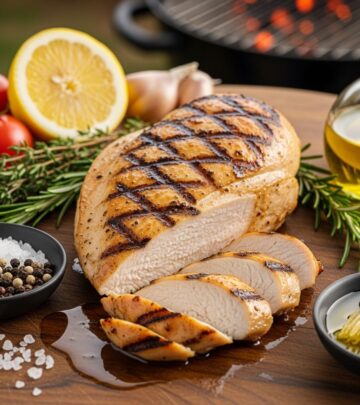Easy Beef Brisket Recipe: Foolproof Step-By-Step Guide
Master tender flavors with this effortless method to impress every time you cook brisket!
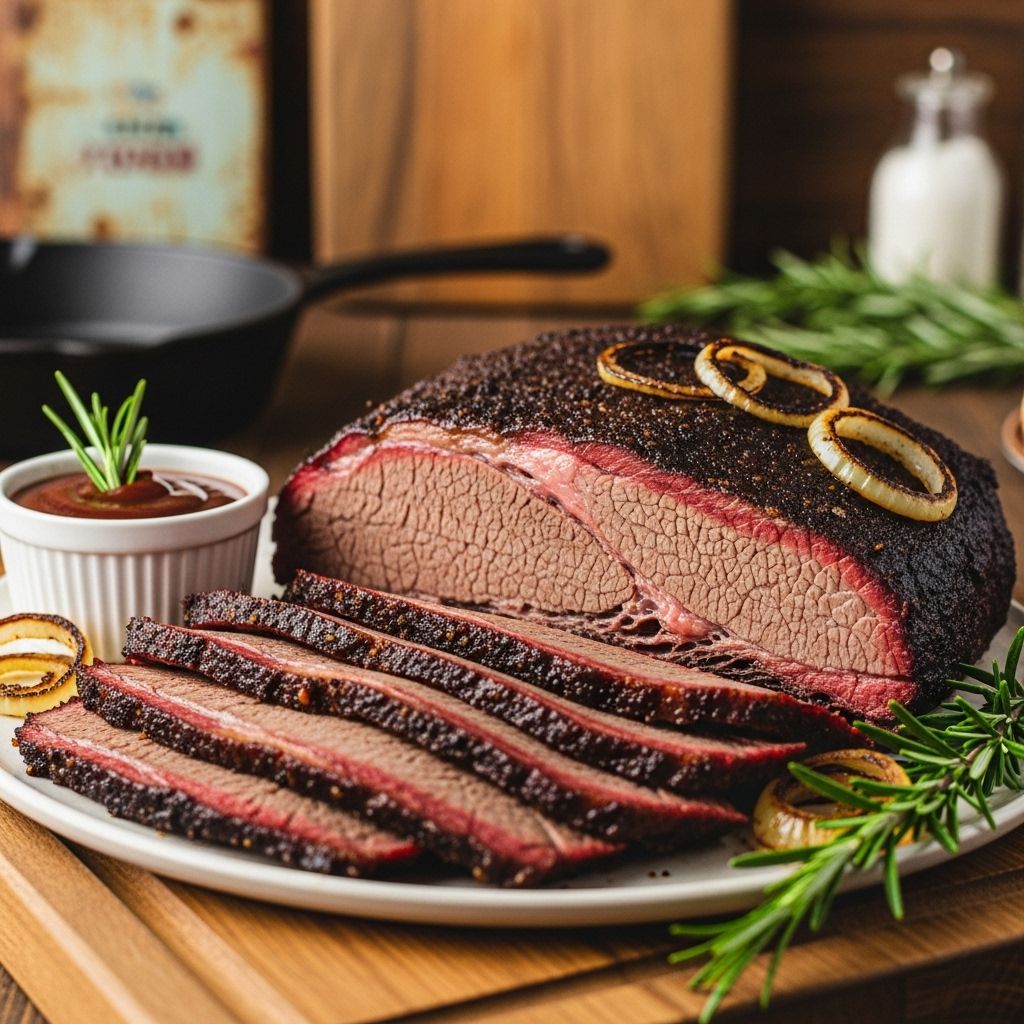
Image: HearthJunction Design Team
Simply the Easiest Beef Brisket: A Foolproof Recipe
Beef brisket has a well-deserved reputation as one of the most flavorful cuts of beef, but it can intimidate even experienced home cooks. The good news? You don’t need to be a pitmaster to create a tender, mouthwatering brisket that will have your family and friends raving. This recipe takes the complexity out of brisket preparation while delivering exceptional results every time.
The secret to a perfect brisket isn’t complicated techniques or fancy equipment—it’s patience and understanding the fundamentals of low and slow cooking. Whether this is your first attempt at brisket or you’re looking to simplify your approach, this recipe provides a straightforward method that yields consistent, delicious results.
What Makes Brisket Special?
Before diving into the recipe, it’s helpful to understand what makes brisket unique. This large cut comes from the chest area of the cow and is comprised of two distinct parts: the flat and the point. The flat is leaner, while the point contains more marbling and fat. Together, these sections create a cut that requires proper cooking to transform from tough to tender.
Brisket contains a significant amount of connective tissue and collagen, which is why it requires long, slow cooking. When cooked properly, this collagen breaks down into gelatin, creating that melt-in-your-mouth texture that brisket lovers crave. The process isn’t difficult—it just takes time.
Ingredients You’ll Need
One of the best aspects of this recipe is its simplicity. You’ll need:
- 1 beef brisket (4-5 pounds)
- 2 tablespoons coarse kosher salt
- 2 tablespoons coarse black pepper
- 2 tablespoons garlic powder (optional)
- 1 large onion, sliced
- 3 cloves garlic, minced
- 1 cup beef broth
- 2 tablespoons Worcestershire sauce
- 2 tablespoons tomato paste
- 1 tablespoon brown sugar
Essential Equipment
You don’t need specialized equipment to make this brisket, just a few kitchen basics:
- Large roasting pan or deep baking dish
- Sharp chef’s knife
- Heavy-duty aluminum foil
- Meat thermometer
- Cutting board
Preparing Your Brisket
Proper preparation is key to a successful brisket. Follow these steps to get your meat ready for cooking:
Trimming the Brisket
While you can ask your butcher to trim your brisket, knowing how to do it yourself gives you more control over the final product. Here’s how to approach it:
- Remove the brisket from packaging and pat dry with paper towels.
- Place the brisket on a large cutting board, fat side up.
- Using a sharp knife, trim the fat cap to about ¼-inch thickness. This provides flavor while preventing excess fat.
- Trim away any hard pieces of fat on the meat side as these won’t render properly.
- If there are any silver skin portions (shiny connective tissue), remove them as they can make the brisket tough.
Don’t worry about achieving perfection—a little fat adds flavor and helps keep the meat moist during cooking.
Seasoning the Brisket
The beauty of brisket is that it doesn’t require complicated seasonings to shine. The traditional Texas-style approach uses just salt and pepper, known as a “dalmatian rub” due to its speckled appearance. For our recipe:
- Mix the salt, pepper, and garlic powder (if using) in a small bowl.
- Coat the entire brisket generously with the seasoning mixture, pressing it into the meat.
- Let the seasoned brisket sit at room temperature for about 30 minutes while you preheat the oven.
The Cooking Process
This recipe uses the oven method, which provides consistent results and is accessible to everyone. The key to perfect brisket is maintaining a low temperature over an extended cooking time.
Preparing the Cooking Environment
- Preheat your oven to 300°F (150°C).
- Place sliced onions at the bottom of your roasting pan or baking dish.
- In a bowl, mix the beef broth, Worcestershire sauce, tomato paste, and brown sugar until combined.
- Place the seasoned brisket fat side up on top of the onions.
- Pour the liquid mixture around (not over) the brisket to avoid washing off the seasoning.
- Cover the pan tightly with heavy-duty aluminum foil, creating a good seal to trap moisture.
The Low and Slow Cooking Method
Patience is crucial when cooking brisket. Here’s the simple cooking timeline:
- Place the covered brisket in the preheated oven.
- Cook for approximately 1 hour per pound of meat. For a 5-pound brisket, that’s about 5 hours.
- Resist the urge to open the oven or check the brisket frequently, as this releases heat and extends cooking time.
- After about 3 hours (for a 5-pound brisket), you can check the liquid level. If it seems dry, add ½ cup of beef broth or water.
Testing for Doneness
Unlike other cuts of beef, brisket isn’t judged by internal temperature alone. While a thermometer reading of 195-205°F (90-96°C) is a good guide, the true test is tenderness. Your brisket is done when:
- A meat thermometer inserted into the thickest part reads 195-205°F
- A fork can be easily twisted in the meat with little resistance
- The meat feels jiggly and soft when pressed
| Brisket Weight | Approximate Cooking Time at 300°F |
|---|---|
| 3-4 pounds | 3-4 hours |
| 4-5 pounds | 4-5 hours |
| 5-6 pounds | 5-6 hours |
The Critical Resting Period
One of the most overlooked yet crucial steps in brisket preparation is the rest. After removing your brisket from the oven:
- Keep it covered with foil and let it rest for at least 30 minutes, preferably an hour.
- This resting period allows the juices to redistribute throughout the meat.
- Skipping this step can result in dry brisket, regardless of how well you cooked it.
Slicing Your Brisket
Proper slicing is the final step in brisket perfection:
- Transfer the rested brisket to a cutting board.
- Identify the direction of the meat grain (the lines running through the meat).
- Slice perpendicular to the grain (across the lines, not parallel) in ¼-inch thick slices.
- Cutting against the grain shortens the muscle fibers, resulting in a more tender bite.
Remember that the flat and point sections may have differently oriented grain directions, so you might need to adjust your slicing angle when you transition between sections.
Serving Suggestions
This versatile brisket pairs beautifully with many sides. Consider serving it with:
- Creamy mashed potatoes
- Roasted root vegetables
- Classic coleslaw
- Cornbread or dinner rolls
- Baked beans
Don’t forget to spoon some of the cooking liquid over the sliced brisket before serving for extra flavor and moisture.
Storing and Reheating Leftovers
Brisket often tastes even better the next day. To properly store and reheat:
Storage Tips
- Refrigerate leftovers within two hours of cooking.
- Store sliced brisket with some cooking liquid in an airtight container.
- Properly stored, brisket will keep in the refrigerator for 3-4 days.
- For longer storage, freeze in airtight containers or heavy-duty freezer bags for up to 3 months.
Reheating Methods
Reheating brisket properly is essential to maintain its tenderness:
- Oven method: Place sliced brisket in a baking dish with some cooking liquid or beef broth. Cover tightly with foil and heat at 275°F until warmed through (about 20-30 minutes).
- Stovetop method: Place slices in a skillet with a few tablespoons of liquid, cover, and warm over medium-low heat until heated through.
- Avoid microwaving if possible, as it can make the meat tough and dry.
Troubleshooting Common Brisket Issues
Even with a foolproof recipe, things can sometimes go wrong. Here are solutions to common problems:
Tough Brisket
If your brisket turns out tough, it’s usually undercooked. The collagen hasn’t had enough time to break down. Solution: Return it to the oven, covered tightly, and continue cooking for another 30-60 minutes.
Dry Brisket
Dryness can result from overcooking or not enough liquid. For future cooks, ensure your pan is properly sealed with foil and consider adding more liquid halfway through cooking.
Too Much Fat
If your brisket seems too fatty, you may not have trimmed it enough before cooking. For serving, you can remove excess fat from slices before plating.
Frequently Asked Questions (FAQs)
Can I cook brisket in a slow cooker instead of the oven?
Yes, you can adapt this recipe for a slow cooker. Season the brisket as directed, place it in the slow cooker with the same liquid ingredients, and cook on low for 8-10 hours until tender.
Should I marinate the brisket before cooking?
While this recipe doesn’t require marinating, you can marinate the brisket overnight in the refrigerator for additional flavor if desired. A simple marinade of Worcestershire sauce, soy sauce, garlic, and herbs works well.
Can I smoke this brisket instead of using the oven?
Absolutely. For a smoked version, maintain a smoker temperature of 225-250°F and smoke until the brisket reaches an internal temperature of 195-205°F, typically 1.5 hours per pound.
Why is slicing against the grain important?
Slicing against the grain shortens the muscle fibers, making each bite more tender and easier to chew. Slicing with the grain results in chewy, stringy meat regardless of how well it was cooked.
Can I make this recipe ahead of time for a party?
Yes, brisket is excellent for make-ahead meals. Cook it 1-2 days before, refrigerate, then slice and reheat just before serving. This can actually improve the flavor as the meat has more time to absorb the seasonings.
With this simple approach to beef brisket, you’ll be able to create a centerpiece-worthy dish that delivers maximum flavor with minimum fuss. The key is trusting the process and allowing the time needed for this magnificent cut to transform into the tender, flavorful meal it’s meant to be.
References
Read full bio of Shinta





